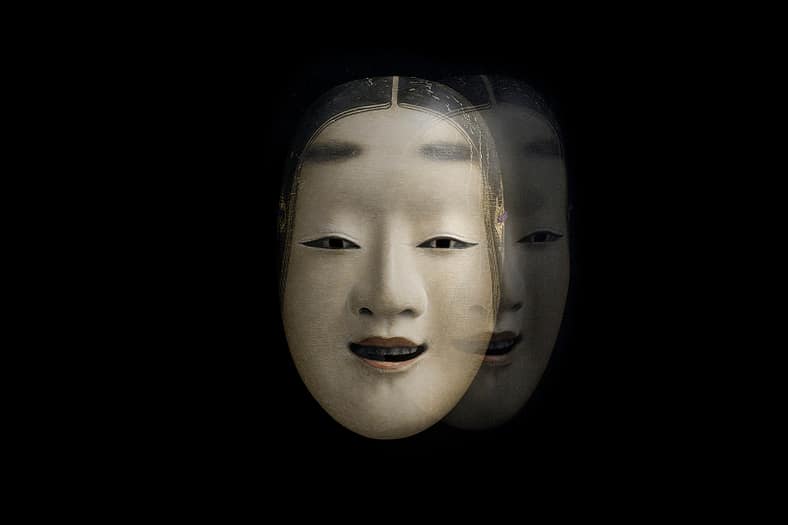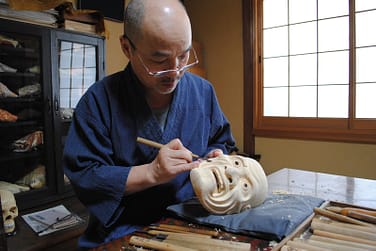Portland Japanese Garden features mysterious encounters with masks of otherworldly creatures.
PORTLAND, Ore. – Depart from the customary Halloween happenings in Portland this year and experience a mask exhibition like you’ve never seen before. Beginning this weekend, come to Portland Japanese Garden to unmask the elusive world of Noh theater and its otherworldly masks.
Mirrors of the Mind: The Noh Masks of Ohtsuki Kokun will be on display at Portland Japanese Garden from October 14-December 3, 2017. Cost is included with Garden admission.
ab-788x525.jpg)
The exhibition includes thirty hand-carved authentic Noh masks created by Kyoto-based master carver Ohtsuki Kokun. The collection includes an array of styles and features. Halloween enthusiasts will find spooky inspiration in the elaborately carved masks of demons, ghosts, and fiendish, gold-toothed lions. Those seeking more peaceful spirits will be captivated by the more traditional Noh masks which appear to change expressions when seen by different angles.

For centuries, the human face and its varied emotional expressions has inspired artists around the world. Noh is one of the oldest forms of theater performed today and has been handed down for more than 600 years. Japan’s Noh theater provides a place for exploring emotion and representing that human expression.

Different than any other art form in Japan, a Noh mask is a “window to the soul” that captivates its audience by becoming its own character on stage through the living presence of the actor and the imagination of the audience. Although inherently static in appearance, a Noh mask conveys a wide range of emotion. An actor can change the character’s expression from happiness to one of deep sorrow, just by tilting the mask slightly while on stage. The play of light, the angle of the mask, the actor’s skill and stage position, all contribute to portraying the character, as does the spirit imbued in a mask in the hands of a masterful carver like Ohtsuki Kokun.
The exhibition also includes a selection of elegant brocade costumes from the traditional silk looms of Orinasu-kan in Kyoto. Mirrors of the Mind: The Noh Masks of Ohtsuki Kokun will be shown in both the Garden’s Pavilion Gallery and new Tanabe Gallery, part of its recent $33.5 million expansion designed by Kengo Kuma.
About Portland Japanese Garden
Portland Japanese Garden, celebrated as one of the most authentic Japanese gardens outside Japan, opened its $33.5M Cultural Village expansion in April. Designed by world renowned architect Kengo Kuma, who is also spearheading the National Stadium for the 2020 Tokyo Olympics, the Garden’s new Cultural Village not only provides additional space to accommodate its rapid visitor growth, but also – and most importantly – enhances its ability to immerse visitors in traditional Japanese arts and culture.
Inspired in the late 1950s by growing cultural ties between Oregon and Japan, Mayor Terry Schrunk and members of the Portland community conceived the idea of building a Japanese garden on the site of the old zoo in Washington Park. Their reasons for building a Japanese garden were twofold: providing the citizens of Portland with a garden of great beauty and serenity, while forging a healing connection to Japan on the heels of World War II. At this time in U.S. history, Japanese gardens were founded across the country as a way to build cultural understanding. Needing no translation, an American could experience firsthand Japanese ideals and values, communicated simply through nature.
The site was dedicated in 1961, and Professor Takuma Tono of Tokyo Agricultural University was retained to design the Garden. Professor Tono’s plan included five different garden styles laid out on 5.5 acres. This was quite a departure from gardens in Japan which typically follow one singular style. His intention was to represent different historical developments in Japanese garden architecture and through that communicate Japanese culture to create a cultural exchange. For more information, visit japanesegarden.org.
###